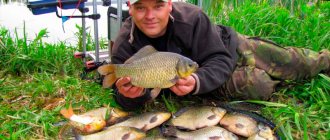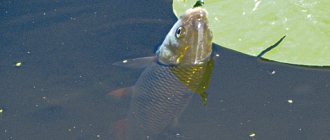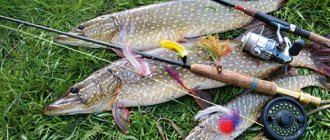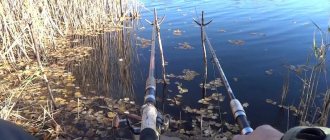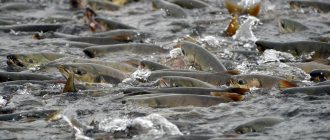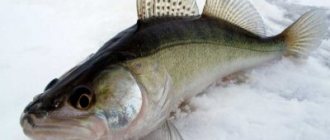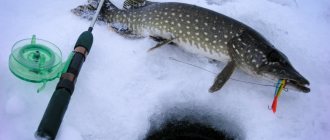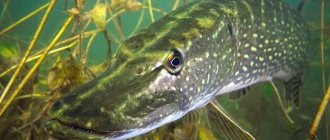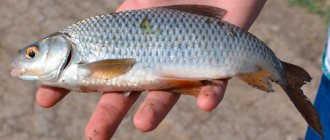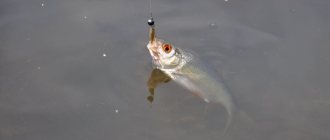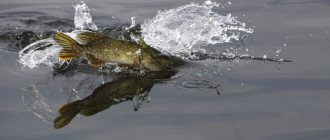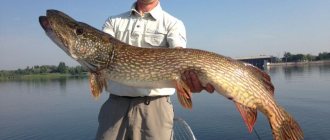Few people think about legislation when going fishing. But, as you know, ignorance of the law does not exempt you from responsibility. Therefore, before putting away hooks, uncovering spinning rods and digging for worms, you should study where, how, what and when it is allowed to fish. So that later there will be no excruciating pain for a thinner wallet and a ruined vacation. Fishing ban 2021, terms and fines.
On January 1, 2021, contracts with tenants of paid fishing reservoirs will be terminated. Fishing will be free on public reservoirs.
Reservoirs previously rented by private owners, where previously you could only sit with a fishing rod for money, will be open for free fishing. The law on recreational fishing, which secures the right of access to water bodies for every resident of our country, came into force a year ago, however, with the caveat that restrictions on free fishing will remain in place for now. And now this period ends. By what rules will free fishing be carried out and are there any unresolved problems in this area?
The recreational fishing law set aside a year to terminate contracts with tenants of paid fishing ponds. On January 1, 2021, such agreements will terminate. The territories of previously paid reservoirs are opened for free fishing.
☸️ DAXES for calculating the amount of damage caused to aquatic biological resources:
For 1 copy. regardless of size and weight:
- Beluga RUB 206,625
- Russian sturgeon 138024 rub.
- Atlantic salmon (salmon) 13675 rub.
- nelma 10811 rub.
- lampreys 5685 rub.
- Sima, trout 5128 rub.
- pike perch 3305 rub.
- grayling, asp, carp, carp, pike, grass carp, silver carp, freshwater catfish 925 rub.
- burbot, bersh, sabrefish, tench, ide, bream, silver bream, blue bream 500 rub.
- roach, dace, crucian carp, chub, podust, freshwater perch 250 rub.
- other types of freshwater fish 100 rub.
- cancer 115 rub.
Caviar / per 1 kg:
- Beluga RUB 82,200
- other sturgeon species RUB 54,910.
- salmon species RUB 27,455
- other types of fish 2288 rub.
Notes:
When calculating damage caused to aquatic biological resources during periods prohibited for fishing and (or) in areas prohibited for fishing, which are established in accordance with the Federal Law “On Fisheries and Conservation of Aquatic Biological Resources”, in addition to the rates provided for in this document, it is taken into account 100 percent tax per specimen (kilogram) of the corresponding species (subspecies).
For each kilogram of sturgeon caviar, in addition to the fees provided for in this document, 100 percent of the tax for a specimen of sturgeon fish of the corresponding species (subspecies) is taken into account, and for each kilogram of salmon caviar, 50 percent of the tax for a specimen of salmon fish of the corresponding species (subspecies).
Let's study the laws for fishermen together!
☸️ What fishing is considered illegal in the Russian Federation, and where you can’t fish?
You can learn more about prohibited fishing from the relevant laws. For example, from Federal Law No. 166 (note “On fishing ...”). According to this law, you can fish freely and freely if you do it on water bodies for which no special use regime has been established. But even under these conditions, you may be subject to restrictions approved by law.
The main list of restrictions is regulated by the federal body - Rosrybolovstvo.
☸️ These include...
- Fishing bans in certain areas and prohibitions on catching certain types of fish.
- A certain weight and size of the fish caught.
- Number, type, size and design of fishing devices and fishing methods.
- Permitted/prohibited periods for fishing.
- Sizes, number and types of fishing vessels.
- Catch volume per 1 private person or 1 vessel.
...And other restrictions.
As for the specific permitted places for fishing in Russia, they are determined by each region independently.
☸️ The places that are prohibited everywhere are the following...
- Near bridges, locks, near dams and hydraulic structures, near fish/factories and cages for raising young animals.
- On water bodies of spawning farms.
- On the fairway from a boat.
- In nature reserves.
- In fish hatcheries.
- In pond/fish farms.
- In spawning grounds during spawning.
- At fish hatchery facilities during the release of young fish.
☸️ Prohibited fishing gear - what can’t you fish with?
- Networks of any type/type.
- Traps of any design/type (with the exception of crayfish traps).
- Passive fishing gear (approx. - hooks, pokes, etc.) on those rivers that are known for their habitats of salmon species.
- Pneumatic weapons (except for devices intended for underwater hunting).
- Fishing rods/spinning rods of any type, system, design with a total number of hooks - over 10 pieces per person.
- Trawls, bottom seines.
- Hook trap devices.
- Network devices/devices (seines and televisions, drills and capes, scarves, etc.).
- Lifters/scoops with dimensions over 1x1 m and mesh pitch over 10 mm.
- Traps and catfish traps.
- Spears and other piercing tools for fishing.
☸️ Prohibited methods of fishing - how can you not fish?
- For undercutting and lighting.
- Stunning fish.
- Trolling using a sail and motor with more than 2 baits.
- By means of barriers that become an obstacle to the free movement of fish (dams, etc.).
- Using circles/langes with the number of hooks - over 10 pcs per person.
- Using crayfish traps when their quantity is more than 3 pieces per person, with a mesh size of less than 22 mm and a device diameter of more than 80 cm.
- By sewing with a total number of hooks - over 10 pieces per person.
- Using the diving method or manually wading when catching crayfish.
- On the close.
- Combines and oilseed traps.
- Descent of reservoirs.
- With the installation of huts on ice.
- From ships and other watercraft that have not been properly registered and do not have legal identification marks on board.
- Electric shock and firearms.
- Electric fishing rods.
- Using watercraft during spawning.
- Scuba diving, underwater.
☸️ Prohibited fishing periods - when is it forbidden to fish?
As for the timing of the fishing ban, they are set by regions individually and change every year, depending on the situation. For example, pike spawning is the end of winter, the beginning of spring +/- 2 weeks. And perch spawning begins after the water warms up to +7.
DATES BY REGION, see the section FISHING RULES.
Be careful! Fishing during spawning is strictly prohibited!
On December 12, 2021, the Duma adopted a new law on recreational fishing (read the full text), which comes into force in 2020.
☸️ Ban on fishing according to its length - acceptable values
It is worth noting that the length of the fish is measured from the highest point of the snout (approx. with the mouth closed) to the base of the middle rays of the caudal fin. For crustaceans, this value will be equal to the length of the body from the end of the tail plates to the line that connects the middle of the eyes.
If the length of the caught fish is less than acceptable, it must be released “home” with a minimum of damage.
So, the valid values are:
- For carp – 30 cm.
- For crayfish - 9 cm.
- For pike perch – 38 cm.
- For burbot – 40 cm.
- For pike – 32 cm.
- For asp – 35 cm.
- For catfish – 40 cm.
- For chub – 20 cm.
- For carp – 24 cm.
- For vimbe - 22 cm.
- For ramming - 16 cm.
- For grass carp – 45 cm.
- For bream – 17-28 cm (depending on the region).
- For trout – 15 cm.
- For subust – 15 cm.
- For bersh – 25 cm.
- For barbel – 20 cm.
- For herring – 15 cm.
- For silver carp – 50 cm.
- Perch - 15 cm.
- Roach - 18 cm.
☸️ Ban on fishing according to its quantity - acceptable values
In terms of the amount of catch, the law determines the following:
- The catch rate per person/day is 5 kg of fish. In this case, there is only one exception - in the case when the weight of the first fish is higher than the catch norm.
- The norm for exporting fish is no more than double the norm for 2 days of stay (export in any form - salted or dried, smoked and raw).
- There are no restrictions on the catch of bleak, minnows and ruffs.
- The catch rate for crayfish is no more than 30 pieces per person/day.
- is strictly prohibited without a license.
- Bait fishing - no more than 30 live bait per person/day.
☸️ Prohibited fish breeds - which ones should you not catch?
Lists of prohibited fish are determined individually in each region.
- For example, for Moscow and the Moscow region - trout and sterlet, crayfish with lampreys, bersh and catfish, podust and sabrefish, white-eye, grayling.
- And in the Kama region it is prohibited to catch trout, taimen, Russian sturgeon and sterlet.
- For the entire territory of the Russian Federation there are restrictions on the size of pike and burbot, bream, and pike perch caught.
- There is a strict ban on fishing for pike, pike perch, asp and bream - if they are used as bait.
- There is a categorical ban on catching the following fish: Atlantic sturgeon (listed in the Red Book, the fine for fishing is about 40,000 rubles), large pseudoshovel, Aral salmon (rare species, 1st category of protection), etc.
Fishing for pike in winter
Many fish (tench, crucian carp) hibernate with the onset of winter. But not pike. And in the winter season, this individual continues to move and feed. However, its activity is still reduced and don’t count on a particularly good catch. This fish does not gather in schools, but lives and feeds separately. And even if pikes intersect with each other, then great friendship does not arise between them.
December
An excellent time to catch pike fraternity is on the first ice. During this period, fish very often go out into shallow water , hunting for fry. But she is very careful and even the slightest rustle can scare her away. If the ice is covered with snow, then fishing for this fish will bring more fruitful results. In general, it is difficult to predict what is good for catching pike. She bites best on live bait. But a spinner, as well as a balancer, can do their job perfectly.
January
Fishermen call this month “dead winter.” The predator is passive and fishing is very sluggish even with live bait. You can, of course, fish in places where other fish live or in deep holes. But this should be done on a warm day and exclusively during daylight hours.
A good option for winter fishing is girders and set-ups. They must be placed at depth and near thickets of grass, as well as in places where other fish stay.
February
The last month of winter brings with it the smell of spring and all predators, including pike, begin to actively move. Fishing during this period is very good. The predator is hungry and ready to swallow any bait. It bites best on live bait, spoons and balance beams. The girders should not be ignored either. The pike moves actively and catches all types of bait.
☸️ All punishments and fines for illegal fishing in 2021 in the Russian Federation
For violation of the law on the use of aquatic biological resources, the following penalties and fines are provided:
- For violation of fishing rules and other rules on fishing (Administrative Code Article 8.37 Part 2). Punishment: fine equal to 2000-5000 rubles. for citizens + confiscation of the vessel and fishing devices.
- For catching fish during spawning. Punishment: fine - up to 300,000 rubles.
- For catching carp, carp or pike during spawning. Punishment: fine of 250 rubles. for each individual. For bream – 25 rubles, for crayfish – 42 rubles. If the caught individual is a female, then the amount of the fine increases by 2 times. For each individual of sturgeon species - an additional 100% of the fine amount (for fishing), for each individual of whitefish or salmon - an additional 200% of the fine amount.
- For illegal fishing through the use of prohibited fishing gear , causing damage on a large scale, during (and in places) spawning, in prohibited fishing areas (Article 256 of the Criminal Code of the Russian Federation). Punishment: fine of 100,000-300,000 rubles. for citizens, or arrest for 6 months.
- For destruction/damage of special signs that define the boundaries of specially protected objects, protected areas of water bodies, etc. Punishment: fine equal to 300-500 rubles. for citizens.
- For fishing without a license (if necessary) or in violation of the conditions provided for by the license (Administrative Code Art. 7.11). Punishment: fine equal to 500-1000 rubles. for citizens.
- For the destruction of rare fish species (from the Red Book). Punishment: fine equal to 1000-2000 rubles. for citizens + confiscation of the catch itself and fishing gear.
- For violation of the rules of relocation, acclimatization or hybridization of aquatic biological resources (Administrative Code Art. 8.36). Punishment: fine equal to 1000-1500 rubles. for citizens.
- For violation of navigation rules for ships. Punishment: fine equal to 500-1000 rubles. or deprivation of the right to operate a vessel for up to 1 year.
- For parking a car near a pond. Punishment: fine equal to 3500-4000 rubles. (note: there must be at least 200 m from the water's edge to the car).
- For violation of water use rules during fishing (Administrative Code Art. 8.14 Part 2). Punishment: fine equal to 1500-2000 rubles. for citizens.
When is there a ban on fishing with spinning rods?
Every angler must know and adhere to the rules of sport and recreational fishing. The time of spring spawning in different regions of the country can vary significantly. Therefore, before going fishing in the spring, it is advisable to clarify in advance the time frame for which the ban on spinning fishing has been introduced in your region. Why can’t you fish even from the shore?
Precisely because the pike comes very close to the shore, and also after throwing eggs, it begins to actively feed and loses all vigilance, as it pounces on any prey, and a spawning ban has been introduced.
In general, throughout the country the ban on pike fishing lasts from early spring until the first days of the summer month. The main reason for this is to allow the natural production of offspring to occur under normal and safe conditions.
☸️ How to fish according to the Law - instructions for law-abiding fishermen
Of course, for a real fisherman there are no such “fishy” nuances that he is not aware of. But given that our aquatic biological resources are becoming scarcer year after year, we risk one day simply not finding fish in our rivers and lakes. Therefore, the rules for law-abiding fishermen will not be superfluous for anyone.
Note: specific places for legal fishing and clear deadlines for prohibitions on it should be found directly in the region where they are established (they are different everywhere!).
☸️Where can you fish?
Fishing is allowed everywhere (during those periods) where it is not prohibited. That is, in public water bodies that are not nature reserves, private facilities, fish breeding enterprises or other places included in the above list. More specific information can be obtained from the regional/district inspectorate.
☸️ When can you fish?
At any time, except for seasons in which fishing is prohibited by law (during spawning). Usually, each fish has its own spawning time, but from May to June fishing is allowed only with 1 fishing rod (and 1 hook).
Traveling on watercraft for the purpose of fishing is also prohibited at this time.
☸️ What can you fish with (we’re talking about amateur fishing)?
Spinning rods and float rods, feeders, girders and mugs, and bottom fishing rods are allowed. But no more than 5 pieces per person at a time.
Other gear is allowed if the number of hooks on it does not exceed 10 pieces.
Underwater fishing (harpoons) is also allowed, but without scuba gear.
☸️ How much can you catch?
The catch limit depends on the region and the fish. The standard figure is 5 kg per person.
There are no restrictions on low-value breeds (ruffs, bleaks, minnows).
The number of crayfish in the catch is no more than 30 pieces and no more than 9 cm in length.
☸️ Is it possible to catch with nets?
Only in certain regions of the country (Far East, Siberia, North) and only if there is a license. It is issued by Rosrybolovstvo after registration and individual marking of the nets with all the owner’s data.
☸️ Personalized permission
It is obtained, again, from Rosrybolovstvo, if the purpose of fishing is one of the 14 species of fish that are prohibited from being caught without a license. This permit stipulates both the validity period, the quantity/weight of fish, and the fishing location. The document is paid (200 rubles).
You will also have to pay 200 rubles. for each crab, 35 rubles. for each pink salmon, 300 rubles. for every salmon caught. Transferring the license to another person is prohibited by law.
☸️ Fishing card
This document gives the right (to a fisherman who has not reached retirement age) to fish throughout the Russian Federation, without the right to catch particularly valuable species of fish. It is also available from Rosrybolovstvo (price: 500 rubles/year or 100 rubles/month). Transferring the card to another person, as in the case of a license, is prohibited by law. It is also worth noting that the catch that the fisherman received with a card or license cannot be sold on the market.
whether fishing on a boat is allowed so that your watercraft is not confiscated, adding to this an impressive fine. The relevant documents and permission for this fishing method must be with you.
Read the article Fishing Rules in Crimea
What you need to know
Before you get ready to go fishing, you need to know what gear experienced fishermen use for pike fishing in the spring.
Pike can be caught both with a spinning rod and a float rod. For spinning, you need rotating spoons such as Baikal, universal and trofimovka. You also need to purchase wiggly ones, such as a spoon, Norway or success, which will be made of brass, red copper or silver plated.
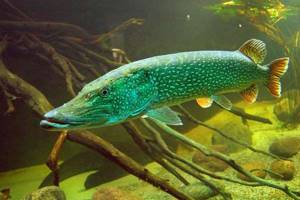
For float fishing you need to prepare:
- five-meter rod with reel,
- 0.33 mm fishing line,
- float 6 g,
- 4 gr weights,
- hooks numbered 12−14.
Selecting a location
To have a good catch, you need to choose the right place. If fishing occurs from the shore, then the best places are:
- small and shallow rivers with little current,
- bays and paddocks,
- ditches and channels.
On large bodies of water, it is necessary to choose a place in shallow waters with last year’s grass, on beaches and shallows, as well as in an area with sharp drops and depressions. For good spring fishing, it is important not only to choose a place, but also to know the best time of day and favorable climatic conditions for a good catch.
Time of day and weather conditions
In the spring, according to the observations of experienced fishermen, the best hours are considered to be from 9-10 to 18-19. Before sunrise and after sunset, the fish are inactive and practically do not feed. This is explained by the fact that at this time the water temperature is very low. When spring frosts resume, the bite stops altogether.
Good eating is also influenced by weather conditions. The main characteristics for fish activity are pressure, temperature, air speed and direction. The best bite occurs in clear sunny weather when the pressure is high. Low pressure leads to strong cold winds and changing weather. At this time, activity sharply deteriorates or ends.
In warm May, the fish's zhor increases, as a rule, on cloudy days with spring rains and winds from the southeast.
☸️ Changes in the legal framework of the fishing industry of the Russian Federation in 2019
In 2021, serious changes occurred in the fishing industry of the Russian Federation. Changes to the federal fisheries law appeared back in 2016, but they will only take effect this year. What should fishermen prepare for?
☸️ Large-scale changes
The amendments previously made to the fisheries law are beginning to take effect. The first thing that will be changed is the revised quota system. Fishing quotas will appear for investment purposes, with the help of which the authorities want to stimulate the creation of new enterprises for processing extracted aquatic biological resources and the production of fish products. In addition, they should “push” the Russian fishing fleet to build new modern vessels at their shipyards. The function of distributing investment quotas will be assigned to the federal executive body exercising control in the field of fisheries and the preservation of aquatic biological resources. The provision of quotas for investment purposes will be regulated by agreements concluded for a 15-year term with the owners or tenants of investment objects. In total, it is planned to conclude about 7 thousand contracts. In the near future, the Government of the Russian Federation will draw up and approve a list of water resources for all commercial fishing regions, requirements for investment objects, as well as the procedure for calculating and distributing investment quotas. It is already known that projects will be selected based on applications. If the requested limits exceed 100% of the investment quota shares, then it is planned to carry out a selection based on fair competition. According to the assurances of the current head of the department, I. Shestakov, this procedure will be carried out as transparently as possible, under the supervision of representatives of the Federal Fisheries Agency.
☸️ Updated coastal fishing rules
Dramatic changes are expected in the area of coastal fisheries. Even during the discussion of the future law, “coastal” became perhaps the most pressing topic. Many issues were raised, from limiting the size of watercraft to banning certain types of processing of extracted resources directly on ships. For example, freezing of caught fish and reloading of catches will be prohibited. The authorities of one or another coastal region of the Federation will determine the place of unloading. In addition, in the coastal zone it was previously possible to extract not only aquatic biological resources falling under the TAC (total allowable catch), but also those whose extraction was not subject to quotas at all. However, the new law leaves the “coastal” only the most common fish species. The federal security agency of the Russian Federation will control the transportation and shipment of caught biological resources, as well as products produced on ships. The law provides for the deprivation of fishing rights for all violators, followed by a forced cessation of their activities.
☸️Distribution of investment quotas
Investment quotas are included in the Regulations on the distribution of TAC. This document regulates the order of distribution of extracted resources regarding the types of quotas. The list of limits includes quotas for investment purposes provided for industrial and coastal fisheries. Investment quotas will be distributed among those participants who are already operating investment objects. According to the Decree of the Government of the Russian Federation No. 1154, this function is assigned to Rosrybolovstvo. The principle remains the same: the enterprise’s share is multiplied by the TAC determined in relation to the investment quota. The deadline for approval of such distribution for a specific fishing period is December 30 of the previous year. After this, within 5 days the department is obliged to publish the distribution results on its own website. The resolution should come into force on April 1 of this year.
☸️ Internal ODU
On January 1, the Rules for the distribution of quotas for inland water bodies came into force. They do not apply to sea waters and those objects for which the TAC is determined within the region. Rosrybolovstvo will distribute quotas based on proposals prepared by fishery research organizations and reviewed by specialists from basin scientific and fisheries councils. When preparing recommendations, the regional characteristics of the water body, quotas for the previous period and the latest changes made by scientific organizations will be taken into account.
☸️ Types of biological resources subject to quotas in certain regions
Since the beginning of the year, Order No. 764 of the Government of the Russian Federation has come into effect. The document approves a list of certain types of water resources extracted in different regions of the country, for which investment quotas are allocated. The list is made up of the most attractive fishing sites for investors. For example, Commander squid in the North Kuril zone and Petropavlovsk-Commander subzone or snow crab birdie in the Kamchatka-Kuril subzone.
☸️ No checkpoints
Vessels operating in the northwestern part of the Pacific Ocean, according to changes in Resolution No. 486, are required to deliver all caught water resources and products made from them to the customs territory of the Russian Federation. This innovation entailed the need to resolve the issue regarding the control points (points) that such ships must pass through. This requirement has long been outdated, as the fishing industry themselves have repeatedly noted. By eliminating checkpoints, they will be able to significantly reduce temporary losses.
☸️ New TSK
In 2021, the Ministry of Agriculture issued Order No. 294, regulating the procedure for equipping fishing vessels with technical control means. According to this document, only devices of the INMARSAT satellite communications company (14 pieces) and the only domestic model of the Gonets system, equipped with AIS (automatic identification system), are allowed for use on ships. They must replace all other technical means used previously. On ships with a displacement of up to 300 tons that do not cross 75 degrees south and north latitudes, the installation of AIS was supposed to be completed before January 1, 2021, but this period was extended for another six months. Later, specialists from the monitoring center made a proposal to delay the installation of permitted devices on such vessels until 2021.
source
What fish should you not catch during spawning?
During spawning in reservoirs, there is a high concentration of various fish species near the coastline. In this regard, in addition to pike fishing, there is a ban on fishing other types of fish with a spinning rod.
Each region of Russia has a list of prohibited species of aquatic biological resources. In the Moscow region these include:
- sterlet;
- trout;
- catfish;
- grayling;
- subdust;
- white-eye;
- blue;
- saberfish;
- bersh;
- lamprey;
- cancer.
For other regions of the country, the lists of fish subspecies prohibited from catching should be clarified with local fisheries authorities.
